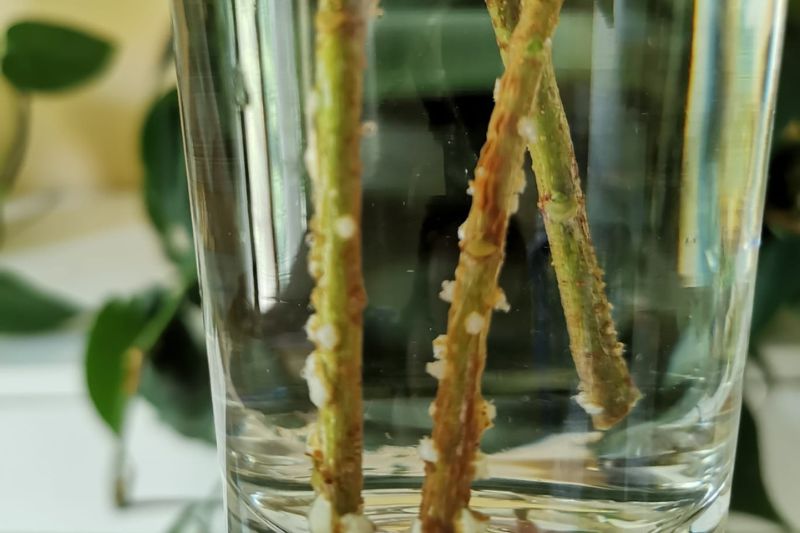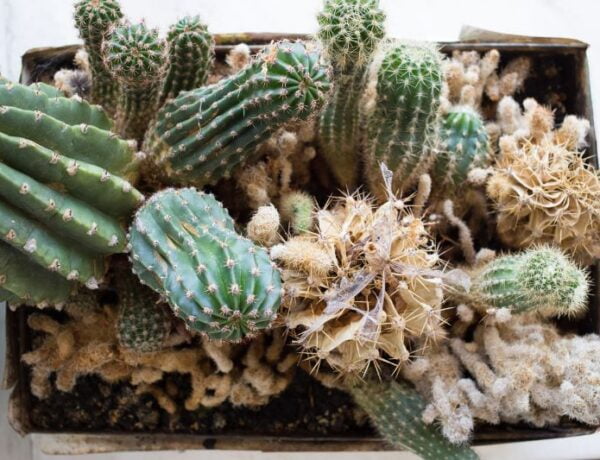Found yourself staring at your hibiscus plant and wishing you could have a few more around? Well, you’re in luck because we’re about to venture on a little plant-propagation adventure.
What’s more, we’re going the lazy yet effective route: propagating hibiscus cuttings in water. Yup, you heard it right, the easiest, laziest, and let’s not forget, absolutely thrilling way to grow these tropical beauties.
Remember, this journey might require a dash of patience and a sprinkle of trial and error, but hey, what’s a gardening adventure without a bit of suspense, right?
Table of Contents
Step 1: Choosing the Right Hibiscus Cutting
Our water-propagation journey begins with a classic choose-your-own-adventure decision: selecting the perfect cutting.
Look for a healthy, robust branch that’s mature but not old enough to have flowered. Flowering requires lots of energy, so your branch might not be in the mood to produce roots. Make sure it’s roughly six to eight inches long, disease-free, and rocking some green leaves.
Once you’ve found your branch, it’s time for a little haircut. Remove all but a few leaves at the top, so your cutting can save its energy for the root-growing part.
Step 2: Prepare Your Cutting for Water Propagation
Next up, recut the base of your hibiscus cutting at a 45° angle. This isn’t just for aesthetic purposes; it’s a bit of plant science. This angle increases the cut surface area, allowing your cutting to absorb more water. It’s like sending your cutting into the water with a hydration backpack.
Step 3: Place the Cutting in Water
Put your hibiscus cutting into a clean container filled with just enough water to submerge the stem but not the leaves. If you’re feeling impatient and want to speed up the rooting process, consider using a rooting hormone.
Step 4: Set the Right Environment
Aim for a warm, humid place with a temperature range of 65–80°F, and let there be light, but not direct sunlight. Bright, indirect light is ideal.
And don’t forget to regularly change the water—at least once a week—to prevent bacterial growth.
Step 5: Monitor Root Development

In a few weeks, you should start seeing roots sprouting along the cutting. Once the roots reach about half an inch in length, you’re ready to transfer the cutting to a pot filled with well-draining potting mix. Continue caring for your plant as you would any other tropical hibiscus plant.
Quick FAQ
Absolutely! Hibiscus cuttings can thrive when propagated in water. But for their best performance, consider a soil transfer down the line.
Generally, you’re looking at a few weeks of suspense before you see those little roots making their grand appearance. Patience is key!
While most hibiscus varieties can be propagated in water, results can vary depending on the specific type and growing conditions. It’s always a good idea to do a little research on your specific variety beforehand.
It’s recommended to change the water at least once a week. Fresh water helps prevent bacterial growth and keeps your cutting healthy.
The best time to propagate hibiscus cuttings is usually in the spring or early summer, when the plant is actively growing. This gives your cutting a longer growing season to establish itself.
Yes, using a rooting hormone can speed up the rooting process and increase the chances of your hibiscus cutting successfully developing roots.
When the roots of your hibiscus cutting are about half an inch long, it’s generally a good time to transfer it to a pot with well-draining potting mix.
Yes, you can use smaller cuttings for hibiscus propagation. However, keep in mind that larger cuttings, typically around 6-8 inches, have more stored energy and often root more successfully. Smaller cuttings can still work, but they might take a little longer to establish and require extra care. Make sure there are at least a couple of leaves at the top, and the cutting is from a healthy part of the plant.
Wrapping it up
And there you have it, plant pals! Your step-by-step guide to the easiest, laziest way to propagate your hibiscus cuttings in water.
Remember, not every cutting will take this journey in stride. Sometimes it takes a couple of attempts, and that’s just part of the fun. So, keep that green thumb waving high, and soon you’ll be admiring a new generation of hibiscus plants in your garden. Happy propagating!






No Comments